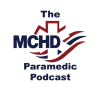The MCHD Paramedic Podcast crew decided to directly address one of the most pressing issues in current EMS practice – paramedic and EMT wellness and burnout prevention.
Dr. Remle Crowe, research scientist and project manager with ESO, joins the podcast to lend her tremendous expertise.
Before burnout can be tackled, it must be defined and recognized. This involves an awareness of burnout clues throughout the entire system; including EMS agencies, our co-workers along with individual providers.
Some simple and cost-effective strategies range from adequate vacation, which allows for batteries to recharge, to implementation of real time clinical feedback. This feedback can be as complex as health data sharing with receiving institutions to sit-down chart rounding with medical directors.
Burnout is a fluid and dynamic process that varies with time and the individual. Therefore, proactive prevention techniques have to be flexible and adaptable as well.
After listening to this episode, you’ll be armed with multiple tools to recognize and attack burnout within your EMS system.
Recognizing and treating EMS burnout
This article was originally posted May 20, 2019. It has been updated.














